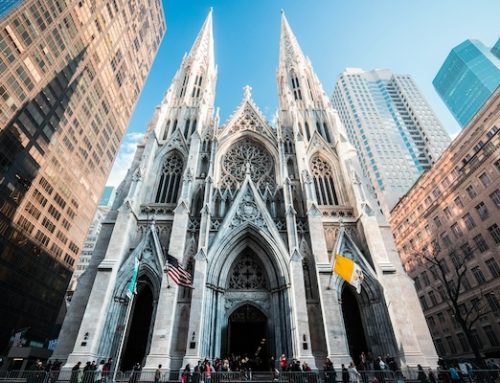From The St. Louis Post-Dispatch:
Tensions flared Saturday atop Art Hill in Forest Park over the symbolism behind a statue of this city’s namesake, some calling for the removal of King Louis IX, with others praying that it stands.
A crowd ballooned to about 200 people by noon, clashing face-to-face at the foot of the “Apotheosis of St. Louis,” the formal name for the iconic statue. Calls for the removal of the statue of King Louis IX of France come as the nation grapples with whether to preserve monuments of historical figures rooted in a racially divided past. The bronze statue of the crusading king from the Middle Ages is a copy of one that greeted visitors to the World’s Fair here in 1904.
“He’s gonna come down,” Umar Lee, one of the protest organizers, said of the statue Saturday. “This guy right here represents hate and we’re trying to create a city of love. We’re trying to create a city where Black lives matter. We’re trying to create a city where there is no antisemitism or Islamophobia … this is not a symbol of our city in 2020.”
Another protest organizer, Moji Sidiqi of the Regional Muslim Action Network said that in addition to removing the statue, she thinks the city of St. Louis should be renamed to celebrate the city’s racial, ethnic and religious diversity.
“It’s a revolution,” she said. “It’s time for change … right now, our number one mission is to take this thing down and sit down with people who want to see positive change take place and continue to heal our country.”
One of those defending the statue was a Catholic priest:
Fr. Stephen Schumacher, a priest of the Archdiocese of St. Louis, was among the defenders of a prominent statue of the city’s namesake as protesters called for its removal Saturday.
Umar Lee, an organizer of the protests, said June 27 that the statue “is gonna come down,” reported Joel Currier of the St. Louis Post-Dispatch. “This guy right here represents hate and we’re trying to create a city of love. We’re trying to create a city where Black lives matter. We’re trying to create a city where there is no antisemitism or Islamophobia … this is not a symbol of our city in 2020.”
Fr. Schumacher, whose priestly ordination was in May 2019, addressed a shouting mob, attempting to inform them about St. Louis’ life, saying, “St. Louis was a man who willed to use his kingship to do good for his people.”
Maria Miloscia told the Post-Dispatch that St. Louis “symbolizes deep faith and convictions. I stand for him. And I stand for those Catholic virtues and those Catholic values that I think are important, like courage, faith and love. But ultimately, I’m here for Christ the King.”
St. Louis was King of France from 1226-70, and he partook in the Seventh and Eighth Crusades. He restricted usury and established hospitals, and personally cared for the poor and for lepers. He was canonized in 1297.
The archdiocese of St. Louis released the following statement:
The history of the statue of St. Louis, the King is one founded in piety and reverence before God, and for non-believers, respect for one’s neighbor. The reforms that St. Louis implemented in French government focused on impartial justice, protecting the rights of his subjects, steep penalties for royal officials abusing power, and a series of initiatives to help the poor.
King Louis IX’s renowned work in charity helped elevate him to Sainthood. His daily suppers were shared with numerous beggars, whom he invited to the royal table. On many evenings, he would not let them leave before he washed their feet. He personally paid to feed more than 100 poor Parisians every day. His care for the sick was equally moving; St. Louis frequently ministered to lepers. He also created a number of hospitals, including one for the blind and another for ex-prostitutes.
For Catholics, St. Louis is an example of an imperfect man who strived to live a life modeled after the life of Jesus Christ. For St. Louisans, he is a model for how we should care for our fellow citizen, and a namesake with whom we should be proud to identify. The sword on his statue is not raised for warfare, but rather is held with the blade down—a symbol of peace.
In his recent statement on Racism, Justice and Peace, Archbishop Carlson said, in part:
“…Scripture tells us to turn our swords into plow shares. Let us turn our guns into metal. May that metal someday be the statue in our community that stands as a reminder that here, in the Greater St. Louis Region, we chose justice so that there would be peace…”
Peace is what St. Louisans hoped for in the new twentieth century when they erected the statue of St. Louis the King—and peace is what St. Louisans still strive toward in this century. The Archdiocese of St. Louis is encouraged by the winds of change that are at hand, but believes that this energy of change should be focused on programs and policies that will dismantle racism and create a more equal society for all races and religions. As Catholics, we believe that each person—no matter their race, religion, background or belief—is created in the image and likeness of God. As such, all should be treated with love, respect and dignity. We should not seek to erase history, but recognize and learn from it, while working to create new opportunities for our brothers and sisters.



